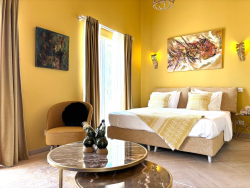
Seahorse population in nature reserve Ria Formosa, Algarve in Portugal
From our Boutique Hotel Guesthouse-Moncarapacho in the Algarve, we overlook the fishing village of Fuseta, the Atlantic Ocean, and a unique lagoon in the Ria Formosa nature reserve. In the eastern Algarve, between Faro and Tavira, lies a 60-kilometer-long belt of islands and peninsulas, backed by a lagoon.
Seahorses in the Ria Formosa National Park
This entire nature reserve also consists of sandbanks, salt pans, marshes, white beaches, and dunes teeming with flora and fauna. It's comparable to our Wadden Sea area.
The Ria Formosa , also known as the Pearl of the Algarve, is home to the largest seahorse community in the world. Unfortunately, the seahorse population has declined dramatically over the past 20 years due to environmental changes, illegal fishing, and excessive shipping traffic.
Raising funds
Our German neighbors, along with other members of the local Rotary club in Almancil, are raising funds for these endangered seahorses. This money will be used to release seahorses into a protected area of the Ria Formosa, where boating and fishing are prohibited.
Because they are so enthusiastic about seahorse conservation, we've become increasingly involved in this wonderful project. For example, Maarten and I visited the research center in Faro in February 2023.
Scientist Jorge Palma, a researcher from the Center for Marine Sciences at the University of the Algarve, spoke enthusiastically about these special creatures and the repopulation project called "Seahorse."
Photo: Researcher Jorge gives tours on request 
At this research center, captive seahorses are cared for by Jorge and his team of volunteers. A few times a year, the young seahorses are released into a protected area.
About the seahorses
Jorge told us about the seahorses. They're a unique little fish! They only eat what they like. They're fragile, can't swim well, and have to hold on to aquatic plants with their tails—a rather unusual sight. The females lay their eggs in the male's belly and leave the rest to the male. Uniquely, the males care for the offspring!
Photo: Seahorses in the research center 
Curious about our beautiful surroundings? Our booking site for 2025 and 2026 is now open. Book now, bem vindo, or be welcome!
This is our own website with the best price. Click here for our accommodations or ask us your question. Or read on with Faro , Islet of Culatra and Farol or go to the overview of all articles.
